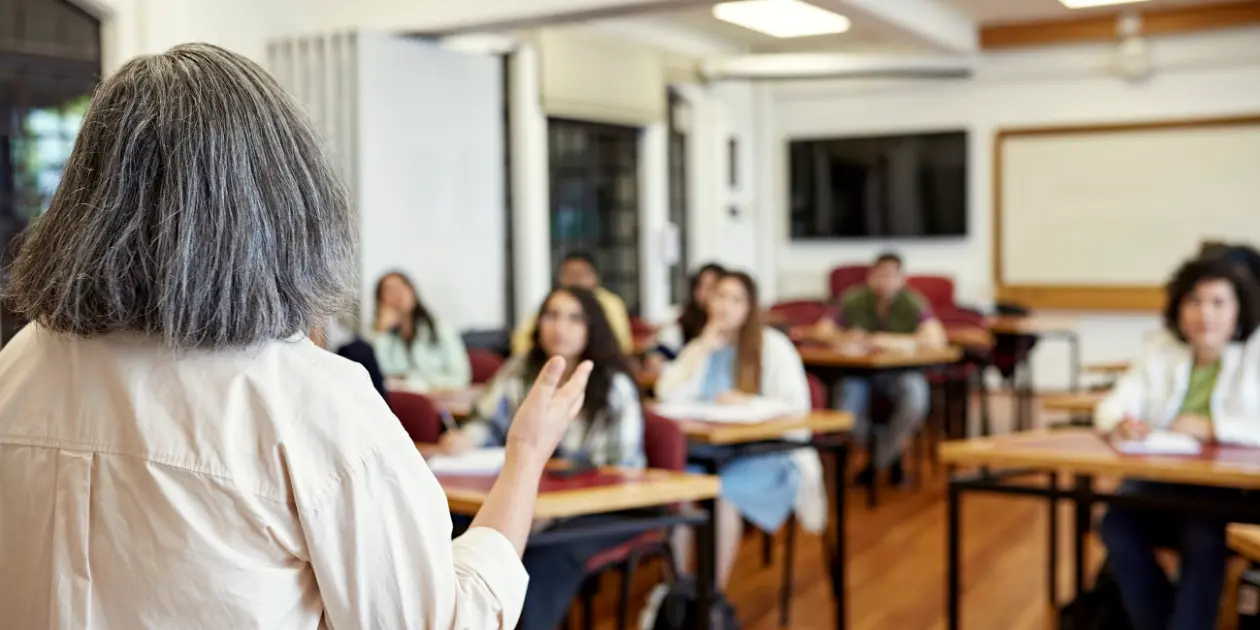In today's increasingly stressful world, the importance of de-escalation techniques for teachers and conflict resolution in the classroom cannot be overstated. As we grapple with this challenging reality, it's crucial to acknowledge that these pressures can be even more pronounced for young people. Students often find themselves in perplexing situations without a clear understanding of the reasons behind them and with minimal control over their living conditions. Due to these circumstances, when a classroom outburst occurs, it becomes crucial to possess the necessary tools to effectively address the underlying causes behind such behavior. This blog serves as an excellent initial resource for acquiring conflict resolution training for teachers.
In addition to these techniques, Prime Secured can provide schools and businesses with all kinds of supportive technological solutions—such as security cameras, audio monitoring systems and more—that will help create a safe environment. But when conflict happens, it’s often up to the humans who are present to keep things from escalating into a violent incident. That’s why we've partnered with an expert security training company, Safe Passage Consulting, to write this blog. They recommend de-escalation steps for navigating conflicts.
The Importance of Conflict Resolution in the Classroom
People outside the field of education may not assume conflict resolution is part of a teacher’s job description, but a teacher is often the person best positioned to handle problems in their own classroom. Of course, we already ask so much of our teachers. The expectations we have for them extend far beyond just imparting knowledge. We also ask teachers to keep students on-task, track their performance and adapt to the needs of dozens of students every day. Most schools have resource officers or other staff to handle conflicts that get out of hand. So why should we ask our teachers to be mediators on top of everything else?

The truth is, most of the time, a situation can be defused long before it escalates into an incident that requires mediation and intervention. When teachers and school staff learn and practice de-escalation techniques, they are in one of the best positions to protect themselves, protect students and maintain the stability of the learning environment. If you are a teacher or school administrator, you can help cool tensions long before there’s a need for physical intervention by applying the techniques outlined in this article.
The 8-Step Process for De-escalation
Our friends at Safe Passage developed this eight-step process that’s easy to remember and practice. This process has proven effective at defusing tense situations in a variety of environments. Using these techniques, you can give an upset student a chance to resolve problems without resorting to violence or other drastic behaviors.
These techniques have achieved real-world results. One teacher who trained with Safe Passage later reported a complete change in the behavior of her students. But the truth is, it wasn’t the students who changed. What changed was the way she handled conflicts when they came up. She turned a chaotic classroom into a productive learning environment by changing how she managed her student’s more difficult emotions.
Step 1: Listen
Start by hearing the student out. Don’t just be quiet and wait for a chance to speak, but maintain eye contact, ask relevant questions and try to understand what the student is saying. Someone who resorts to shouting or physical aggression is often doing so because they feel like they have no other outlet. This will give the student a chance to purge emotions that have built up and caused them to act out. You’ll also have an opportunity to assess the situation, so you can make an informed choice about how to proceed.
Step 2: Acknowledge
A student who feels they’re being listened to is far less likely to resort to drastic action. Acknowledge what the student is saying, letting them know you understand what they’re feeling. Don’t simply wait for your turn to speak and give a canned response. Be an active listener and try to understand why they feel the way they do.
Step 3: Agree
When you and a student find common ground, they will see that problems can be solved without anger. Find a point in what they are saying that you can agree on. This doesn’t mean you have to give in to demands or agree to statements of fact you believe are false but try to find some point of agreement you can build from. This will move the student’s focus away from trying to overpower the problem and more toward a mutual understanding.
Step 4: Apologize
By apologizing for anything unfair or unjust, you can provide a model for the rest of the conversation. If the student believes you’re invested in finding a fair resolution to the conflict, they won’t feel like they need to rely on their anger. Emotional outbursts often occur when people don’t feel like they are being respected or heard. If you acknowledge they were wronged, they’re less likely to see you as an enemy.
Step 5: Clarify
So many avoidable conflicts come from misunderstandings. Don’t make that mistake when it can be solved with a simple question! Never assume you understand the source of a student’s frustration. If you have questions, ask. Repeat the situation as you understand it and ask the student to confirm that you have a clear view of what’s going on. This also overlaps with Step 1—if you’re asking questions, the student will know you’re really listening.
Step 6: Choices and Consequences
Because they’re operating purely on emotion, angry people usually haven’t thought through the consequences of their actions. Giving your student a clear view of their options—and outlying the consequences of each—gives them a path toward resolving the conflict. Giving them a choice in how the situation is resolved will help them feel in control and less like they need to take drastic action. A peaceful resolution will be best for everyone. Make sure the student understands why resorting to violence or property damage won’t help them.
Step 7: Sequence Questions
You can distract an angry person from their difficult emotions by asking them to go over the events leading up to their outburst, step by step. Ask them to clarify details, such as the order of events or where they were standing. Guide the student toward thinking about the situation more logically, and less emotionally.
Step 8: Suggestibility
Telling someone what to do when they’re upset can sometimes make them even angrier. Instead, try making suggestions or requests when possible. For example, instead of ordering a student out into the hall to go over what happened, you can say, “Do you mind if we talk about this outside the classroom?” This will show the student you respect them, even while you remain in control.
De-Escalation Techniques for Teachers- Equip Yourself with the Tools You Need
You’re far more likely to reach a peaceful conclusion if you use this list of techniques, rather than if you were to operate off instinct. Take time to learn and practice these steps, so you won’t fall back on getting angry yourself. While there may be times when you need to assert your authority as a teacher, simply getting angry and challenging a student directly has a chance to make the situation worse.
Of course, not every situation can be defused with a simple step-by-step list. This process is an effective tool, but it shouldn’t be the only technique you have access to. To be completely prepared to resolve conflicts in your classroom, you need a variety of techniques and the ability to recognize what will be the most effective in a given situation. Safe Passage training sessions not only teach you what to do, but allow you to practice what you’ve learned and go over how you handled it with an expert, so you learn what you could have done better. It’s worth the small amount of time a training session takes, because of the outcome you’ll experience: a more productive learning environment.
You DO have the power to control what happens in your classroom!
In addition, Prime can provide you with technology that helps keep bad actors out of your school, alerts administrators to conflicts in the halls or gives you more information about an incident after the fact so you can be better prepared for the future.
The pandemic, high unemployment, and financial distress have increased the pressures of everyday life for all of us, and sometimes that pressure can cause us to act out in negative ways. Young people are especially susceptible to this kind of stress, and it often shows up at school. If teachers can learn how to guide students to peaceful resolutions, it will go a long way to ensuring classrooms are a safe and productive environment for everyone.

